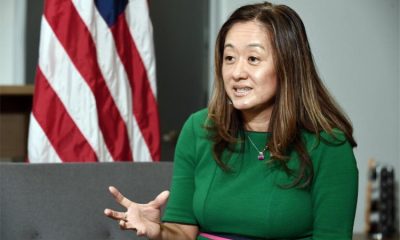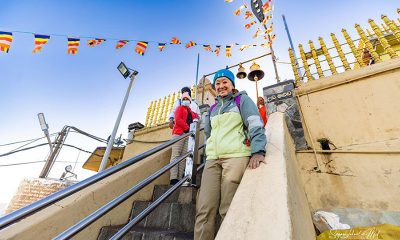Midweek Review
Will 2023 be a year of further economic-political-social crisis?
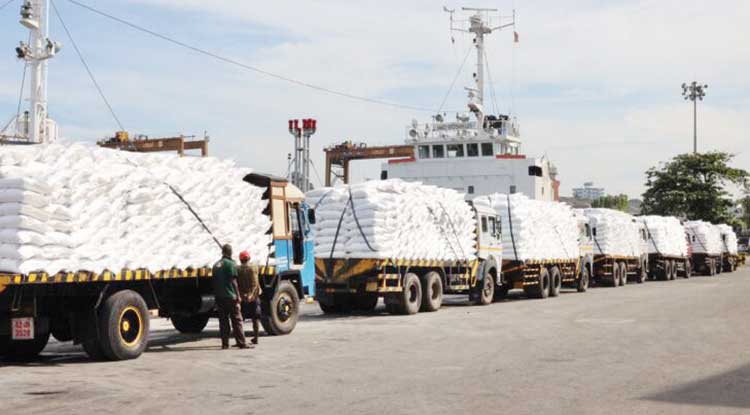
By Shamindra Ferdinando
A steady stream of press releases, issued during 2022, by Colombo-based diplomatic missions, UN and its agencies, and those representing INGOs, depicted a pathetic picture of Sri Lanka. They dealt with financial and material assistance, provided on Sri Lanka’s request, and also in line with international response to the developing crisis here.
Ruling Sri Lanka Podujana Peramuna (SLPP), and other political parties, represented in Parliament, seemed to be blind to the rapidly developing crisis, especially against the backdrop of the country continually being denied the USD 2.9 bn IMF loan facility.
Having secured ‘staff level’ agreement on Sept. 01, various government spokespersons expressed confidence in obtaining the first tranche, by end of 2022. That hasn’t materialized.
It would be pertinent to mention that the agreement, on the urgently needed facility, has been held up, pending necessary approval of the overall plan by Beijing and New Delhi. The Treasury and the Central Bank are obviously uncertain when the much desired agreement can be finalized.
Foreign media releases highlighted Sri Lanka’s growing dependence on international assistance. Let me first discuss a statement, dated Dec. 19, issued by the World Food Programme (WFP). Carol Taylor, Communications Associate, WFP, Colombo, in a two-page statement, dealt with the food crisis, with the focus on Dustin Shiau, Senior Regional Programme Officer of the U.S. Agency for International Development (USAID)’s Bureau for Humanitarian Assistance (BHA).
Having to receive humanitarian assistance, 12 years after the successful conclusion of the war against the Liberation Tigers of Tamil Eelam (LTTE), underscored Sri Lanka’s plight.
Referring to the USAID official’s visit to one-time LTTE bastion, Mullaithivu, Taylor asserted the population there is among the worst affected. During the war, the WFP provided significant assistance to those trapped in LTTE held areas, particularly in the Vanni region.
According to Taylor, the US has provided USD 20 mn, in 2022, and of that USD 13 mn (approximately Rs 4.7 bn) enabled them to assist the needy, recently. Declaring that the WFP project got underway, in June, just ahead of President Gotabaya Rajapaksa’s ouster, the operation intended to provide food and nutrition assistance to 3.4 mn people.
Taylor estimated they had so far reached one mn people, including schoolchildren, benefited by the free meal programme.
The WFP press statement has substantiated assertions made by the international community as regards the developing economic-political-social crisis here. The government and the Opposition continued to play politics with an unprecedented national calamity caused by mismanagement of the economy, waste, corruption and irregularities.
Cash-strapped Sri Lanka received USAID financial assistance, amounting to USD 46 mn, to procure 9,300 tonnes of urea. The first consignment reached Sri Lanka in December.
Those in political authority should be ashamed, particularly because they failed to initiate a programme to purchase paddy. In spite of the intervention of President Wickremesinghe and Prime Minister Dinesh Gunawardena, the Wickremesinghe-Rajapaksa government never released funds, required to buy paddy. Agriculture Minister Mahinda Amaraweera owed an explanation as to whether the incumbent government has ceased the purchase of paddy. If so, there is no point in maintaining the Paddy Marketing Board (PMB) at taxpayers’ expense, while the private sector dominates the market.
The first consignment of urea, received in December, was meant to meet the requirement of 193,000 smallholder paddy farmers, in Jaffna, Mullaithivu, Mannar, Vavuniya, Anuradhapura, Trincomalee, Batticaloa and Moneragala districts. Additional stocks are expected, early next year, and, altogether, one million farmers are expected to receive fertiliser, procured by the Food and Agriculture Organization (FAO), on behalf of the USAID.
Addressing a small gathering, at the Colombo Port, US Ambassador Julie Chung declared that they have announced over USD 240 million in new assistance and additional loans for small businesses over the last year.
In the absence of a cohesive plan, with the Wickremesinghe-Rajapaksa government ensnared in a political crisis, the international community has stepped in. Sri Lanka currently lacks the wherewithal to at least start re-building the economy. Instead, those who ruined this country, over the years, are now preoccupied trying to play the role of its saviour, having brought the once proud nation to its knees.
The hapless Sri Lankan public should be eternally grateful for top South Korean official, Cho Sung Lea, for publicly issuing a warning to Social Empowerment Minister, Anupa Pasqual, for being late for a scheduled meeting at the Ministry, on Dec 21. South Korea Disaster Relief Foundation (SKDRF) President Cho Sung Lea took the State Minister to task for being 30 minutes late for a scheduled meeting in Colombo. The South Korean declared that with the likes of Pasqual, Sri Lanka has no hope of overcoming the continuing crisis. Lea emphasized the pivotal importance of the public having faith in their political leadership.
We will refrain from commenting on how lily white South Korean politicians, including top ones, have been over the years, for the moment, for our politicians often, without doubt, take everyone for granted, no sooner they become important ministers, having become drunk with power.
Having entered parliament from the Kalutara district, Pasqual, a senior member of civil society group Yuthukama, switched his allegiance to President Ranil Wickremesinghe by accepting a portfolio.
Perhaps, the South Korean should be invited to address Sri Lanka’s Parliament, possibly the mother of all problems in the country. Governor of the Central Bank, Dr. Nandalal Weerasinghe, in a hard hitting speech, delivered in Parliament on August 31, squarely held the irresponsible and reckless political party system responsible for the current crisis.
High profile Chinese agenda
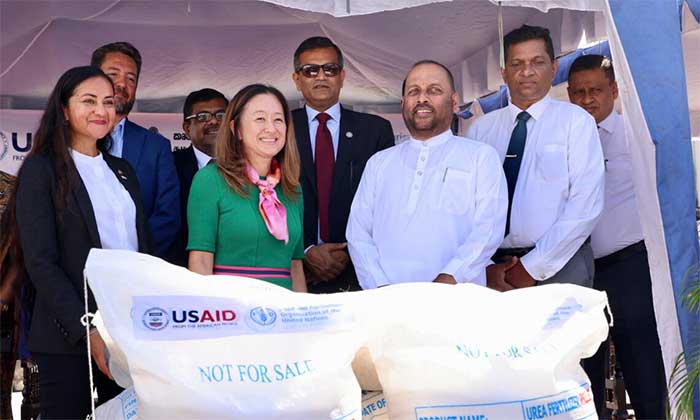
US Ambassador Julie Chung at the Colombo Port where she officially handed over a large stock of fertiliser to Agriculture Minister Mahinda Amaraweera and (below) lorries loaded with bags of fertliser (pics courtesy US embassy, Colombo)
The situation is so bad, Sri Lanka has been compelled to ask for, and accept, whatever is offered by the international community. A range of assistance, offered, included stocks of rabies vaccines. India and Germany provided the funding needed to purchase rabies vaccines.
Throughout this year, China provided significant assistance as Sri Lanka struggled to cope up with increasing difficulties. Despite having haughtily questioned Chinese intentions here, with the Yahapalana government causing serious row, and the crisis over the rejected carbon fertiliser shipment, during Gotabaya Rajapaksa administration, Sri Lanka, over the past two years, received significant Chinese assistance.
The political leadership here should be aware that foreign assistance does not come without strings attached. A Defence Ministry press release, dated Dec. 21, dealt with a financial grant amounting to Rs 5 mn, received by that Ministry, from the Chinese Embassy.
Following a joint request made by State Defence Minister, Premitha Bandara Tennakoon, and Defence Secretary, Gen. (ret.) Kamal Gunaratne, the Defence Ministry has received a Rs 5 mn grant for the utilization for the development of the National Cadet Corps (NCC).
The latest Chinese grant, received for the benefit of the NCC, is part of the overall funding programme, covering several important fields, including agriculture and fisheries.
Recently, China announced their decision to donate school uniform material, worth USD 13.51 million, to meet 70 percent of Sri Lanka’s requirement, in 2023. According to a Chinese Embassy statement, the first batch of material is already on its way to Sri Lanka. The first batch contains 2,374,427.5 meters of white shirt/ frock material, 350,031.5 meters of white trouser material, 150,003.5 meters of blue trouser material and 138,134 meters of saffron coloured robe material for monks.
In a twitter message, the Chinese Embassy said that the total length of the material is about 10 times the distance from Colombo to Jaffna. China also supports a free midday meal programme for schoolchildren. Much to the relief of farmers and fishers, China provided 10.6 mn liters of diesel, to be distributed among the two badly affected communities. This was part of the RMB 500 mn (USD 76 mn) emergency grant China voluntarily extended to Sri Lanka. In addition, Sri Lanka sought to convince China to provide a credit line for fuel. China made the offer during Gotabaya Rajapaksa’s presidency (between the March 31 protests – outside the President’s private residence, at Pangiriwatte, Mirihana – and the May 09 attacks on the Galle Face and Kollupitiya protesters). Initially, China declared a 200 RMB grant and later made an additional commitment, amounting to a further RMB 300 mn. The total grant was meant for the urgent purchase of medicine, food, fuel and other essentials.
The Chinese announcement was made in the wake of Sri Lanka suspending debt repayment on April 12. But Agriculture Minister Amaraweera brashly declared that China was responding to a request by President Ranil Wickremesinghe.
China has gradually enhanced its role in the Northern and Eastern Provinces, since the last presidential election, in late 2019. The continuing political-economic-social crisis has facilitated the Chinese agenda as the government has no option but to accept whatever assistance is granted as it couldn’t meet even the basic needs of the population. The executive, the legislature and the judiciary are enmeshed in controversies, at different levels, as the country plunges further into abyss.
Beijing underscored its expanding interests in the Northern and Eastern regions by its Deputy Chief of the Chinese Embassy Hu Wei undertaking a three-day visit in the second week of this month. Wei was there to supervise the distribution of fuel, 9,000 metric tons of rice, among students from underprivileged families, and 100 sets of solar lights to 38 schools across the Eastern Province.
Chinese Ambassador Qi Zhenhong toured the North in December, last year, at the time the economy was experiencing difficulties, though the public were yet to feel it. (Mirihana was to erupt four months later). During the high profile visit, the Chinese envoy took a boat ride to the Adam’s Bridge, widely referred by the Indian media as ‘Rama Setu’, a row of limestone shoals across the narrow Palk Strait between Mannar and Rameswaram, in Tamil Nadu. Some interested parties raised concerns over Qi Zhenhong’s visit to the North, against the backdrop of the suspension of a solar energy project that was to be carried out in three Jaffna islands, with ADB funding.
New Delhi’s strategy on track
In spite of the absence of sustained protests, since UNP leader Ranil Wickremesinghe’s election, through a parliamentary vote, as the President, in July, this year, the country is still in a deeply troubled state. It would be a grave mistake, on the part of the government, to believe that the absence of long queues, for basic services, didn’t mean the end of the crisis. In fact, the continuing power cuts, and the possibility of much longer electricity interruptions, on a daily basis, coupled with the unprecedented hike in power tariffs, can trigger protests.
The recent meetings the Research and Analysis Wing Chief, Samant Goel, had in Colombo with President Wickremesinghe and Basil Rajapaksa, who wields political power over the ruling Sri Lanka Podujana Peramuna (SLPP), meant how concerned New Delhi is with developments here. Obviously the Indian Spy Chief’s visit underlines their interest here as the Wickremesinghe-Rajapaksa government struggles to cope up with daunting challenges.
Having invested here, heavily, over the years, especially having provided much needed financial assistance, this year, that prevented the total collapse of the Colombo administration, New Delhi is obviously deeply committed to further consolidate its position in this tiny nation. India provided extraordinary financial support, prompting India basher JVP leader Anura Kumara Dissanayake to publicly appreciate New Delhi’s response to the crisis here.
But, China poses quite a challenge, having had the opportunity, over the years, to develop a network of friends at the right places. One-time Foreign Secretary, Shivshankar Menon, who had served in Colombo as High Commissioner (1997-2000), dealt with this issue in ‘Choices: Inside the Making of India’s Foreign Policy’, launched in Oct. 2016.
In spite of President Wickremesinghe’s repeated declaration that his government wouldn’t take sides in international or regional conflicts, Sri Lanka is embroiled in a China-US battle for supremacy. Sri Lanka is caught up in ‘Quad,’ strategy. The four-nation security and political alliance, comprising the US, India, Japan and Australia, is pursuing an anti-China agenda. The developing economic-security-social crisis has weakened Sri Lanka’s defences. Therefore, the country is susceptible to Chinese, as well as Quad strategies.
Former Minister, Prof. Tissa Vitharana’s recent declaration that the US may revive its efforts to secure Sri Lanka’s consent for the once-rejected MCC (Millennium Challenge Corporation) as well as SOFA (Status of Forces Agreement), shouldn’t be disregarded as ramblings of an old man.
During the Yahapalana administration (2015-2019), the US sought to finalize MCC, SOFA and ACSA (Acquisition and Cross Servicing Agreement) though Washington managed to secure ACSA, thanks to the then President Maithripala Sirisena’s support. A much weaker Sri Lanka is now a playground for big players, as political parties, represented in Parliament, pulled in different directions, for their own survival, without thinking of the greater good of the country.
Sri Lanka’s relations with Quad member Japan suffered irrevocable damage as a result of the unilateral cancellation of the Japanese-funded Light Rail Transit (LTR) project, in Sept. 2020, a month after the Sri Lanka Podujana Peramuna (SLPP) obtained a near two-thirds seats at the last parliamentary elections. The cancellation of the project, without consultations, angered the Japanese who could have provided significant assistance at the onset of the financial crisis here. Japan went to the extent of ignoring Sri Lanka’s specific requests for an urgent loan facility though some assistance was provided later.
Contrary to former Chairman of the Committee on Public Enterprises (COPE) Prof. Charitha Herath’s claim that the decision to call off the LTR project remains a mystery, the National Audit Office has revealed the existence of a Cabinet memorandum, dated Sept. 24, 2020, in this regard.
Having unilaterally suspended debt repayment, on April 12, 2022, Sri Lanka enters unchartered financial territory in the New Year with the hope a consensus can be reached on the USD 2.9 bn IMF facility as soon as possible early next year. But, Sri Lanka’s hopes remain largely dependent on Indian and Chinese acceptance of the overall plan. Regardless of Sri Lanka’s plight, the response of India and China would be largely influenced by their overall strategies.
Unfortunately, Sri Lanka (Government and Opposition) lacked a tangible action plan to face the daunting challenges in the coming year. Both seemed unprepared to face the crisis and unexpected developments can cause further destabilization. The recent allegations, pertaining to former lawmaker Prof. Ashu Marasinghe, following the release of a video by Adarsha Karadana, who had been living with him, is a case in point. There is absolutely no need for the writer to repeat what is now in the public domain. But, let me repeat what Karadana, who had been living with Prof. Marasinghe, who switched sides after having entered the political scene with the intervention of Wimal Weerawansa, speculated about the Wickremesinghe-Rajapaksa government granting the former National List MP top diplomatic positing. Let us hope the government would prove Ashu Marasinghe’s ex-paramour wrong.
Midweek Review
Impact of US policy shift on Sri Lanka
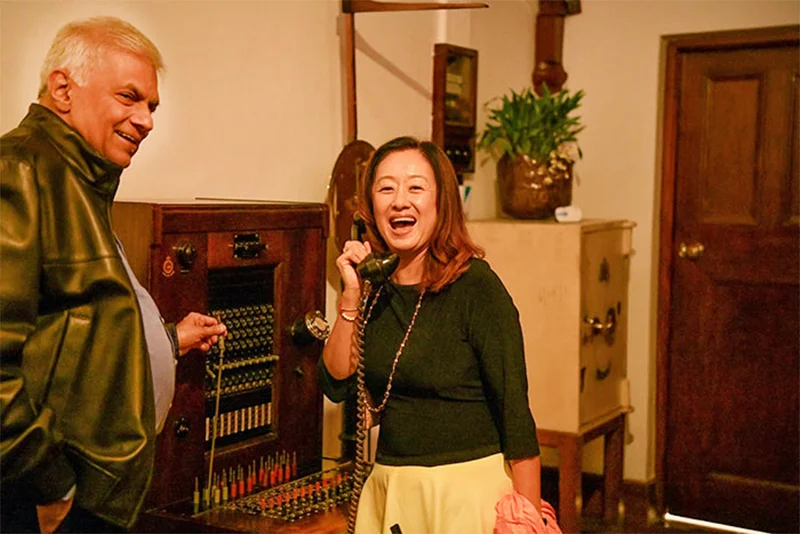
President Trump has unceremoniously overturned US foreign policy. His decision to deport illegal Indian migrants just ahead of a summit with Premier Narendra Modi, underscored the tough stance taken by the new US admiration. The much-touted US-India strategic partnership didn’t deter Trump from carrying out the much-publicized humiliating deportations of Indians. US Vice President J.D. Vance’s speech at the Munich Security Conference, recently, indicated that Trump has terminated his special relationship with Europe and is charting his own course. The upcoming Trump and Russian leader Putin’s meeting stressed that the US policy wouldn’t be shaped by European concerns over Russia. Against that background, the US is very much unlikely to pursue the Biden policy as regards bankrupt Sri Lanka. Actually, Sri Lanka’s political leadership will have to do some serious thinking and re-examining our position as Trump redraws US foreign policy.
By Shamindra Ferdinando
Since the successful conclusion of the war in mid-May 2009, despite all the naysayers, and even the likes of the then British Foreign Secretary David Milliband and French Foreign Minister Bernard Kouchner, rushing here at the eleventh hour with the hope of getting President Mahinda Rajapaksa to halt the offensive to enable them to evacuate the LTTE supremo, his family and their surviving fanatical terrorist band to safety abroad, the US appointed five Ambassadors to Colombo. Of them four were women, namely Patricia A. Butenis, Michele J. Sison, Alaina B. Teplitz and incumbent Julie J. Chung. Between the tenures of Sison and Teplitz, the only male Atul Keshap, of Indian origin, served here for a period of four years (Aug. 2015-July 2018) during the Yahapalana administration.
Ambassador Chung oversaw President Gotabaya Rajapaksa’s forced ouster in 2022. In spite of her denial, Amb. Chung’s role in President Rajapaksa’s removal is clear and cannot be disputed. Amb. Chung will soon be replaced by Elizabeth Kathryn Horst, currently the Principal Deputy Assistant Secretary and Deputy Assistant Secretary responsible for Pakistan, yet another country in which Washington is mired in regime change operations in the region.
Amb. Chung presented her credentials on Feb. 25, 2022, to President Rajapaksa, at the Janadhipathi Mandiraya. The President was flanked by State Foreign Minister Tharaka Balasuriya and Presidential Secretary Gamini Senarath. The new US envoy took office close on the heels of a major crisis within the government that compelled the President to ask for his Secretary Dr. P.B. Jayasundera’s resignation. Just five weeks after Amb. Chung took over the mission, the ‘GotaGoHome’ campaign got underway and a President, elected with over 6.9 mn votes on the SLPP ticket, was thrown out of office within four and half months by violent mobs armed with meticulous intelligence as to which politicians’ houses were to be ransacked and torched, along with those of their close supporters in a matter of a few hours, especially on May 09, 2022. Exactly two months later they completed their despicable mission by storming the Presidential palace.
The SLPP, both in and outside Parliament, accused Amb. Chung of staging the ouster of President Gotabaya Rajapaksa. Award-winning author Sena Thoradeniya (Galle Face Protest: System Change or Anarchy) and (Nine: The Hidden Story) by National Freedom Front (NFF) leader Wimal Weerawansa, MP, dealt with Amb. Chung’s sordid involvement.
However, the writer believes that the whole exercise should be examined as another arrogant US intrusion rather than Amb. Chung’s private agenda. Her job was to do the bidding of Washington. Let me stress that the US made a serious but an abortive attempt to bring President Mahinda Rajapaksa’s reign to an end in 2010. Thanks to Wikileaks we know how the US used a UNP-led coalition, that included the wartime LTTE ally the Tamil National Alliance (TNA), and the JVP, to back retired General Sarath Fonseka at the presidential election. That gamble failed. The war-winning Army Chief ended up with egg on his face with an unforgettable thrashing from the overwhelming southern electorate.
Eyebrows were raised when the outgoing American envoy recently expressed her desire to meet Sri Lanka Podujana Peramuna (SLPP) leaders at the Nelum Mawatha party office as she never bothered to do so since her arrival in early 2022.
Contrary to speculation, the outgoing US Ambassador had sought a meeting about two weeks ago before the unprecedented public exposure about the USAID’s (United States Agency for International Agency) sinister operations here and worldwide in the wake of the new US administration deciding to curtail drastically its operations for being a white elephant as America itself is being confronted with a fast developing and yet to be fully fathomed economic crisis, which might even exceed the worldwide Great Depression that came with the 1929 stock market crash. On her arrival at Nelum Mawatha last Friday (14) Amb. Chung was received by SLPP General Secretary and Attorney-at-Law Prasad Kariyawasam. The SLPP delegation was led by its National Organizer Namal Rajapaksa and one of the three lawmakers in the current Parliament. Having accused her of being in the thick of the regime change, the SLPP’s readiness to meet Amb. Chung, too, is a mystery.
It would be pertinent to briefly explain the USAID’s global objectives as the vast majority wrongly believed the agency is meant for humanitarian work. It is definitely not a charity. Its main objective is to strengthen capabilities of US agents, or assets, at local and regional levels regardless of the status of Washington’s relationship with the targeted country.
These agents, or assets, are available for the US at any time as Washington desired. Pentagon, the State Department or even the Central Intelligence Agency (CIA) used its resources under whatever circumstances. If we closely examine the pattern of USAID operations, as well as other related organizations that had been active here over a period of time, even our legislature is within the sphere of their influence. In other words, they obviously have direct access to politicians and officials who wield power over key institutions. The private sector, too, became part of the US operation carefully expanded countrywide.
By the time Amb. Chung arrived here. US assets were in place at different levels ready to carry out directives. Those who pointed a finger at Amb. Chung never bothered to examine the background and comprehend the gradual build-up that allowed the gathering of all elements, under the social media fuelled ‘GotaGohome’ campaign.
The US mission here had done a tremendous amount of work, especially beginning with the Amb, Keshap’s time, to enhance the capacities of their existing assets and identify and develop new assets.
What really prompted Amb. Chung to suddenly seek a meeting with the SLPP? Did National List MP Namal Rajapaksa’s call for the setting up of a Parliamentary Select Committee (PSC) to probe USAID funding, influence her decision? But that cannot be as the US Embassy made the request before the USAID controversy. Perhaps, SLPP General Secretary Kariyawasam expressed concern over Amb. Chung’s frequent visits to the JVP headquarters at Pelawatte, whereas she ignored the SLPP.
Appearing on a live television programme, Kariyawasam pointed out that Amb. Chung had plenty of time for the JVP, a party with just three MPs, while the SLPP, in spite of being represented by 145 MPs, never received the US envoy’s attention.
Perhaps Amb. Chung didn’t really feel the requirement to visit Nelum Mawatha as she maintained a close contact with the SLPP founder Basil Rajapaksa.
Ambiguity over objectives
It would be pertinent to ask both the sponsors and recipients whether various foreign-funded projects achieved their objectives.
The following are some of the USAID-funded projects launched, beginning 2017: [1] USD 19 mn social cohesion and reconciliation project implemented by Global Communities (July 2018-Dec, 2023) [2] Analysis of social cohesion and reconciliation implemented by US Institute of Peace at a cost of USD 700,000 (Aug. 2018-Feb. 2024) [3] USD 15 mn project implemented by Chemonics International Inc. to strengthen the justice sector, including the Justice Ministry and Office of Attorney General (Sept. 2021-Sept. 2026) [4] USD 17 mn project carried out by National Democratic Institute, International Republican Institute and International Foundation for Electoral System in support of Parliament and other government institutions, including the Election Commission (June 2020 – June 2024) [5] USD 14 mn worth project in support of civil society meant to achieve good governance reforms and strengthen accountability. Implemented by Management Systems International (Feb. 2018-Aug. 2024) [6] USD 7.9 mn scheme to strengthen media implemented by International Research and Exchanges Board Inc. (Aug. 2017-April 2023) [7] SAFE Foundation implemented a programme at a cost of USD 3.9 mn aimed at combating human trafficking (Oct. 2021-Sept. 2026) [8] USD 1.6 mn project to enhance protection for those threatened by gender-based violence (Oct. 2021-Sept. 2026). Implementing agency Women-in-Need [9] USD 3.6 mn project for the benefit of plantation community implemented by Institute of Social Development (June 2022-June 2027) and [10] a staggering USD 19 mn project meant to strengthen the civil society by unnamed private agencies (Sept. 2022-August 2027).
Interestingly, high profile USAID operations implemented in collaboration with successive governemnts covered the Justice sector (Justice Ministry and Office of Attorney General), Parliament as well as the Election Commission.
Over the years USAID with a massive budget that even exceeded the CIA’s and allied organizations have built up a system that served the interests of the US. That is the truth. Sri Lanka has cooperated not only with the US but other organizations, such as the UNDP, to allow them influence in Parliament. The USAID and UNDP have ‘secured’ Parliament by lavishly spending funds on various projects. In spite of spending millions in USD with the 2016 agreement between Parliament and USAID being the single largest project, what they have achieved here is nothing but a mystery.
Successive governments have encouraged USAID, UNDP and other interventions. They felt happy as external sources provided the funding. Let me give an example of how the UNDP stepped-in for want of sufficient public funding for vital government initiatives. Sometimes, they advanced their political project in the guise of helping the government of the day.
On May 13, 2021, the then Attorney General Dappula de Livera, PC, opened the USAID funded state-of-the-training facility that included a boardroom, auditorium, computer laboratory, and other facilities. The outspoken AG also launched an electronic system to track cases and legal files. The launch of the training facility, electronic diary and file management system, and the Attorney General’s Department website were also attended by Supreme Court Judge Justice Yasantha Kodagoda P.C., Acting Solicitor General Sanjay Rajaratnam P.C., the Secretary of the Ministry of Justice M.M.P.K. Mayadunne, and virtually by DCM Kelly and USAID Mission Director Reed Aeschliman.
The US Embassy, in a statement issued on that quoted AG Livera as having said: “This is another first in the 136-year history of the Attorney General’s Department. The opening of the training centre is a notable, salutary achievement that meets a long-felt need for continuous learning and professional development.” The AG was further quoted as having said these new tools would “drive the institution from strength to strength.”
If such facilities were so important why on earth the Attorney General’s Department failed to take tangible measures to meet that particular requirement.
Those who demand investigations into USAID must realize that their role is much more complicated than alleged and reported in some sections of the media. Among the beneficiaries were the Sri Lanka Judges’ Institute.
American Corner in Jaffna
The US Embassy established an American Corner in Jaffna with the collaboration of Jaffna Social Action Centre (JSAC), an NGO that particularly promoted women and children rights. Formed in 2003 in the North as the Liberation Tigers of Tamil Eelam (LTTE) was preparing to launch Eelam War IV, JSAC, over the years, developed into a recipient of US funding. JSAC is among the groups promoting LGBTQ in the Northern and Eastern Provinces. JSAC annually participates in the much-touted 16 Days of Activism Against Gender Based Violence campaign. The then US Ambassador Butenis attended the opening of the American Corner. JSAC, in its website, has revealed an impressive list of partners and donors.
Perhaps JSAC should explain how it served the interests of ordinary people, especially during the 2003-2009 period when the LTTE stepped up forcible recruitment of children, including girls. Forced conscription continued unabated as the military slowly but steadily rolled back the LTTE fighting formations, towards the east coast, until they were trapped in a sliver of land in the Mullaitivu district.
Sri Lanka should be grateful for US assistance over the past decades. The ordinary people benefited from such help but later Washington weaponized the setup as various interested parties queued up to secure lucrative contracts.
Amb, Chung, in late Sept. 2022, moved the American Centre in Colombo, that had been in existence for over seven decades, to the new US Embassy building. This was a couple of months after Aragalaya (March – July 2022) forced Gotabaya Rajapaksa out of office. The American Centre in Colombo had been first located at the Millers Building in Colombo, then at Galle Face Court, followed by Flower Road, before moving to the Sri Ramya at 44, Galle Road.
The American Corner in Kandy was established in 2004. In addition to Jaffna, Colombo and Kandy, there are similar facilities in Matara and Batticaloa.
The recent declaration by Bharatiya Janata Party MP Nishikant Dubey, in the Indian Parliament, that the USAID had been funding organisations with a view to creating unrest cannot be ignored. The BJP’s declaration underscored the gravity of the situation. Those who discarded repeated accusations by National Freedom Front (NFF) leader Wimal Weerawansa as regards US interventions here must take a fresh look at the developments taking place since Donald Trump’s return for a second term.
Dubey alleged the USAID funded organizations that carried out protests against the Agniveer initiative of the government, backed caste census, and supported Naxalism in India.
On behalf of the BJP, Dubey asked for a probe into whether Congress and the Gandhi family-controlled Rajiv Gandhi Foundation had received USAID funds through George Soros’ Open Society Foundations (OSF) for conducting activities, including the campaign for a caste census and against the Agniveer scheme introduced by the government. The MP claimed OSF received ₹5,000 crores from USAID to “break up India”. He raised the issue during zero hour.
The BJP MP’s accusations seemed somewhat surprising as India, under Narendra Modi’s leadership, established close relations with Washington and is a member of the four-country Quad, comprising the US, Australia, Japan and India meant to counter Chinese expansion.
Why subvert India? Is the question in everybody’s mind? President Trump, during a joint press conference with Premier Modi, speculated about the possibility of USAID role in the Lok Sabha elections last year. Perhaps Trump is playing politics even at the expense of the US as he sought to dismantle USAID.
The Trump administration has imposed a global stop-work directive on USAID, suspending most aid initiatives, except for critical food relief programmes.
However, India, too, had been blamed for interfering in internal affairs of other countries. Recently Canada alleged that India intervened in its electoral process. Canada named China as the other offender. India has strongly refuted the Canadian allegation. It would be pertinent to mention that Canada had been playing politics with Sri Lanka for many years as major political parties sought to exploit the post-war developments for their advantage. New Delhi also accuses Canada of encouraging Khalistan separatists operating from there.
Canadian Parliament, in May 2022, unanimously declared that Sri Lanka perpetrated genocide in a bid to appease Canadian voters of Sri Lanka origin.
The expansion of the USAID project here should be examined against the backdrop of Geneva adopting a US accountability resolution, co-sponsored by the treacherous Sirisena-Wickremesinghe government in 2015. The US backed Sirisena’s candidature at the 2015 presidential election. That was in line with their overall strategy to end the Rajapaksas rule, perceived to be China-friendly. The US funded the 2015 UNP-led campaign that involved the TNA and JVP as well. A group of civil society groups, led by the National Movement for Social Justice (NMSJ), backed Sirisena’s candidature, who switched sides at the last moment having been in the Rajapaksas camp throughout his political career and it was done after having a hopper feed with them the previous night.
Having betrayed his own party in 2014, Sirisena has ended up politically irrelevant. That is the price the one-time SLFP General Secretary had to pay for switching sides for personal gain. The former President is most unlikely to get an opportunity to re-enter Parliament ever again.
The NPP will have to be cautious how it handles the situation against the backdrop of developing political and economic upheaval in Washington as we may have never seen hitherto. The way the new administration addressed much more complicated issues, such as the Russia-Ukraine war in a manner seriously inimical to the European powers and pullout from the Geneva-based UNHRC and WHO meant that Trump has already turned US foreign policy upside down.
Midweek Review
Revisiting Humanism in Education:
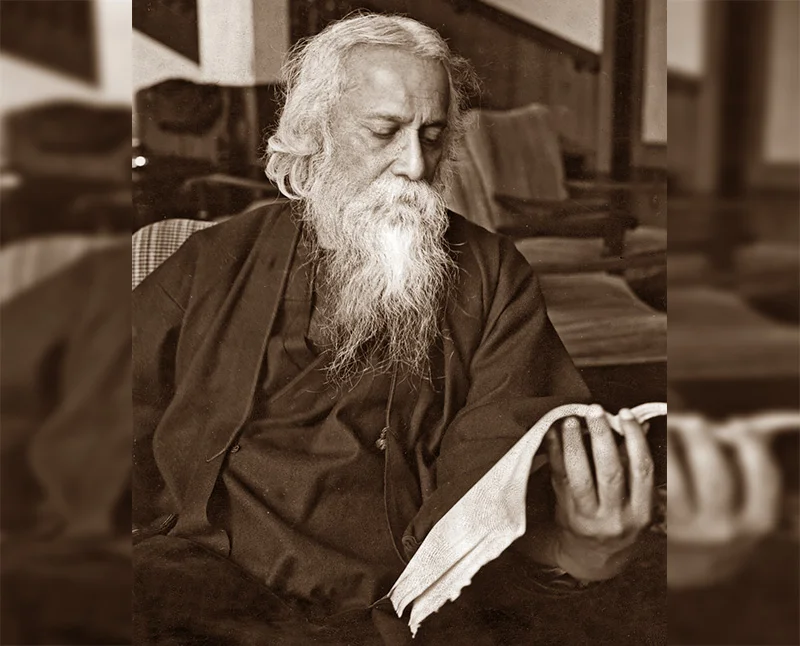
Insights from Tagore – III
by Panduka Karunanayake
Professor in the Department of Clinical Medicineand former Director, Staff Development Centre,
University of Colombo
The 34th J.E. Jayasuriya Memorial Lecture
14 February 2025
SLFI Auditorium, Colombo
(Continued from18 Feb.)
Tagore had an important answer to the question of whether the economic or the political should enjoy the primacy of place, in designing educational policy. He said: “Economic life covers the whole base of society, because its necessities are simplest and the most universal. Educational institutions, in order to obtain the fullness of truth, must have close association with this economic life.”
Sometimes I have difficulty understanding why Tagore, in spite of his appreciation of science and disdain for superstition, still lavishly exalted his traditional dieties and the scriptures. I think he did so because he saw a remarkable practical utility in them for the organisation of society and because they carried innumerable lessons for human conduct – for which science and technology, or even modern administration, had not yet furnished any suitable alternative.
Besides, it is clear that he admired religion’s potential to bring peoples together. In The Religion of Man, he wrote: “On the surface of our being we have the ever-changing phases of the individual self, but in the depth there dwells the Eternal Spirit of human unity beyond our direct knowledge.” But of course, religion seldom brought humanity together. And whenever it played the divisive role, he did not blindly follow its precepts.
The stickiest issue in India for the modern philosopher is probably its caste system, and Tagore had no qualms about repudiating it:
“…differentiation and separation of vocations and trades, professions and callings on which the caste system originally rested has become totally extinct and it is altogether impossible to maintain it any longer. Yet all the taboos, external restrictions and customs associated with the varna system are still in place, static and intact. It seems we must put up with the cage with all its iron bars and fetters though the bird for which it was made is dead and gone. We provide bird feed every day but no bird feeds on it. In this way, due to the cleavage between our social life and social customs, we are not only being inhibited and obstructed by unnecessary, outmoded arrangements, we cannot live up to our professed social ideals, either.”
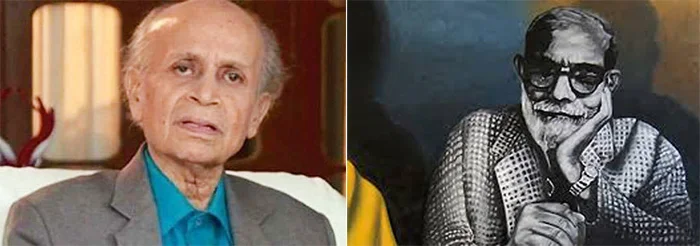
Prof. Carlo Fonseka / Dr. Abrahm T. Kovoor
I wish that for our country, we could replace the phrase ‘caste system’ with our own ‘outmoded arrangements’ – such as astrology, superstitious rituals and harmful so-called healing practices – and carefully re-read that quote. Sadly, our populace is filled with superstition, myth and pseudoscience – as a cursory glance at the supplements of any weekend Sinhala newspaper would show. Here, the high literacy rate actually works against the nation! Our public intellectuals must also take the blame, because they have failed to sustain the good work that had been done in the 1970s by intellectuals like Dr E.W. Adikaram, Abraham Kovoor and Professor Carlo Fonseka.
Another interesting point in his ideas is his desire to see education as a tool for everyone, not just the educated few. Reminding us on ancient Indian education and learning, he said:
“There was a regular traffic between specialised knowledge and ordinary knowledge. Scholars, pundits or learned society did not have an antithetical relationship with the less learned segments of society…There was hardly a place in the country where the Ramayana, the Mahabharata, the Puranic myths and religious discourse did not spread in a variety of ways. Even the theoretical philosophical issues which were rigorously, relentlessly discussed and debated in philosophy and metaphysics always filtered down to the mind of the people…In those days learning was the asset of the entire society and not the acquisition of the learned few.”
In our own country, in contrast, I wonder whether expanded access to education has had a similar effect. In spite of decades of education in swabhasha and wide access to education, knowledge is a tool of separation, seclusion and self-aggrandisement for the few who win the lottery. Is this the fault of the education or the educated? Perhaps both. The educated use their learning as a weapon rather than as a tool to serve, a manifestation of the fierce competitiveness and the fixed mindset that pervades the successful products of our education. At the same time, as Tagore pointed out, it is the fault of education too:
“The rains of our education are falling a long distance away from where the roots of our whole life lie…Our ordinary daily life has no use for the education we acquire…It is unjust to blame this on students. Their world of books and the world in which they live everyday are poles apart…That is why it is seen that the same person who has formidable erudition in European philosophy, science and ethics tenaciously clings to the age old superstitions…We are no more amazed when we see that on the one hand he is separately enjoying literature full of varied sentiments while on the other he is busy only with making money…”
These are a few fundamentals that can be gleaned from Tagore’s second phase. They aren’t many, and perhaps they aren’t as earth-shattering as one might expect. But I feel that they are exactly what we are lacking today and prevent education from playing a nation-building role. If we can get these right, we actually need to get very little else right.
Phase 3: ‘Freedom from bondage’
Tagore’s role and position as an unrepentant internationalist at the time when India was demanding swaraj is well known. He was opposed to nationalism, and in fact correctly identified colonialism itself as a manifestation of the nationalism of the British – so he asked, if one were anti-colonialist, how could one be nationalist also?
But his internationalism was not a rootless existence floating aimlessly in the air. He was clear that one must be rooted in one’s own soil, strongly and firmly – it is from here that one must reach out to the wealth of the world. In another beautiful simile, he urged us not to fear the wind, and to open the windows of our house to let that wind in. He would assure us that we would be able to retain the good that the wind blew in and get rid of the bad. He also said that as long as our house had a firm foundation, the wind will not blow it away. So for him, the first step of being an internationalist is studying one’s own soil and placing a firm foundation for one’s existence. He admired and studied tradition without being a traditionalist.
With regard to Indian universities of his day, he lamented the fact that these were European grafts and nothing like India’s ancient intellectual heritage, such as Nalanda, Wikramshila or Takshasila. He lamented the type of intellectual this would produce. He wrote in 1932:
“We receive European learning as something static and immutable and consider it the height of modernity to cull and recite sentences from it. For this reason we lack the courage to reconsider it or think about it from a new angle. Our universities have nothing to do with and are cut off from the acute questions, dire necessities and extreme hardship facing the people of the country…Like parasites our mind, attached to text books, has lost its ability to find its food and invent by itself.”
These words seem no less relevant to our own universities, 90 years after they were written.
Tagore’s belief in internationalism and its effect on his philosophy of education is captured by his description of Visva-Bharati, the higher education institute he set up in 1921 using the Nobel Prize money: “Visva-Bharati represents India where she has her wealth of mind which is for all. Visva-Bharati acknowledges India’s obligation to offer to others the hospitality of her best culture and India’s right to accept from others their best.”
Conclusion
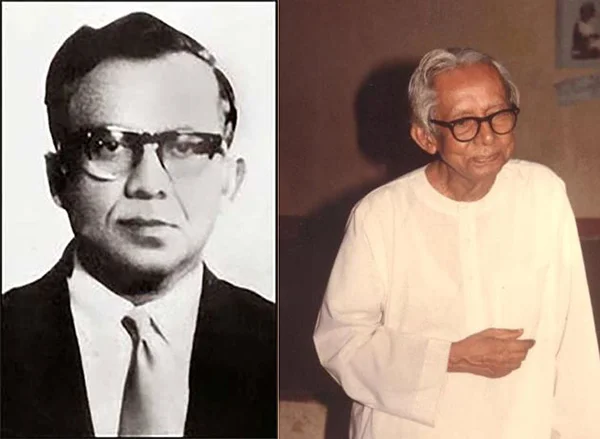
Prof. J. E. Jayasuriya / Dr. E. W. Adhikaram
Ladies and Gentlemen: I am afraid time would not permit me to cover the whole breadth of Rabindranath Tagore’s complete educational philosophy, and I wouldn’t even pretend to cover it in depth. For example, I didn’t touch on other important aspects that Tagore spoke of, such as school administration, advice for teachers, maintaining discipline without corporeal punishment, carrying out research and promoting creativity, women and education and so on. Forgive me for only scratching the surface. But the topic of Tagore’s educational philosophy is so vast that nothing wider would be possible in a short time.
You will also note that my talk was not filled with anecdotes of incidents and peculiarities at Santiniketan – like how classes were conducted under trees or how the gurudev once conducted a class in the rain for cattle when the students didn’t want to come out and get wet. These are not the timeless substance of the tale; they are only its time-sensitive ornaments.
If, on the other hand, I have been able to whet your appetite for his educational philosophy, and also convinced you that he had patiently worked on and presciently invented an antidote to today’s problems of education, I would be content for now. Balance was his antidote. My goal this evening was to place the seeds of his ideas in your minds, and hope that they will grow, be nourished and be pruned and manicured into a contextually appropriate shape in the months or years to come.
Selected bibliography
Dasgupta, U. (2013). Rabindranath Tagore: A Biography. Oxford University Press. (Translated by hiisß ckl l=udr- mßj¾;l (2024).rúkaøkd;a ;df.da¾-udkj ksoyi iy úúO;ajh kqf.af.dv iriú m%ldYlfhdaව)
Dore, R. (1976). The Diploma Disease: Education, Qualification and Development. London: George Allen & Unwin (republished in 1977 by Institute of Education, University of London).
Gunasekara, P. (2013). moaud .=Kfialr – kkaofiak .%duSh wOHdmk l%uh^1932-1939) lkakka.r;=udf.a wu;l l< fkdyels w;ayod ne,Sula fld<U iQßh m%ldYlfhda: කන්නunasekara, S.P. (2012). iuka mqIamd .=Kfialrම(2012). rúkaøkd;a ;df.da¾ fld<U tia f.dvf.aසහiyifydaorfhda(Basedon Rabindranath Tagore: The Myriad Minded Man (1995) by Krishna Dutta and Andrew Robinson, and other works.)
Illich, I. (1970). Deschooling Society. USA: Harper & Row (republished in 1973 by Penguin Education, Harmondsworth, England).
Iyengar, K.R.S. (1987). Rabindranath Tagore: A Critical Introduction. London: Oriental University Press.
Kripalani, K. (1961). Tagore: A Life. New Delhi: National Book Trust, India (author publication, republished in 1971 by National Book Trust, India).
Maithra, S., translator (2014). Education as Freedom: Tagore’s Paradigm. New Delhi: Niyogi Books.
Navaratnam, R. (1958). New Frontiers in East-West Philosophies of Education. Calcutta: Orient Longmans.
Neogy, A.K. (2010). Santiniketan and Sriniketan: The Twin Dreams of Rabindranath Tagore. New Delhi: National Book Trust, India.
Samuel Ravi, S. (2024). Philosophical and Sociological Bases of Education (2nd edn). Delhi: PHI Learning. (Chapter 13: ‘Rabindranath Tagore’, pp. 163-179.)
Sarathchandra, E.R. de S. (1942). ‘Through Santiniketan eyes’. Kesari People’s Weekly (Jaffna) serialised from 2(9) to 2(17) and compiled by Goonetileke, H.A.I., also available translated to Sinhala ^iqpß; .ï,;a-mßj¾;l ප(2001). ශYdka;s ksfla;kfha weiska fld<U tia f.dvf.a iy ifydaorfhda).
Venn, G. (1965). Man, education and work. In, Cosin, B.R., editor: Education: Structure and Society. Harmondsworth: Penguin Books. (Chapter 6, pp. 97-107.)
Venn, G. (1971). Preparation for further preparation (editorial). Educational Leadership 1: 339-341.
Midweek Review
Posy for the Unsung
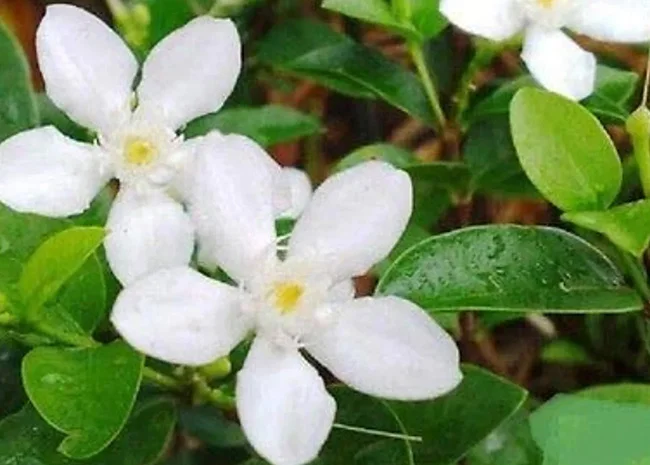
By Lynn Ockersz
You may call it a pilgrimage,
This yearly trudge she undertakes,
A posy of dainty flowers in hand,
To a rock-pile on a secluded hill,
Reeking of the graveyard’s silence,
Which covers her son’s remains,
Whom they bound and whisked away,
With dozens of other angry young men,
To a high place where elders say,
They were made to dig their graves,
At the point of smoking Ak-47 guns,
But all that scores of mothers such as her,
Have earned for their long nights of pain,
Are yellowing number tags for the missing,
Issued within stone walls of official silence.
-

 Sports5 days ago
Sports5 days agoRemarkable turnaround for Sri Lanka’s ODI team
-
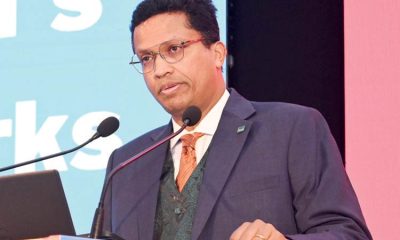
 Business5 days ago
Business5 days agoUN Global Compact Network Sri Lanka: Empowering Businesses to Lead Sustainability in 2025 & Beyond
-
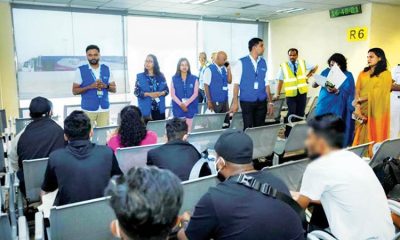
 Features5 days ago
Features5 days agoScammed and Stranded: The Dark Side of Sri Lanka’s Migration Industry
-
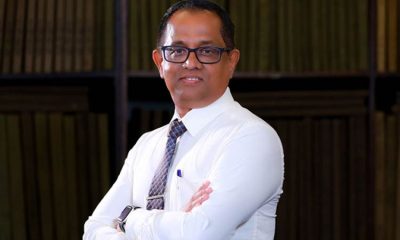
 News6 days ago
News6 days agoSpeaker agrees to probe allegations of ‘unethical funding’ by USAID
-
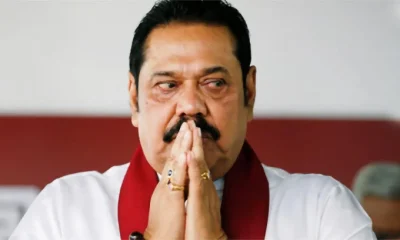
 Features4 days ago
Features4 days agoDon’t betray baiyas who voted you into power for lack of better alternative: a helpful warning to NPP – II
-
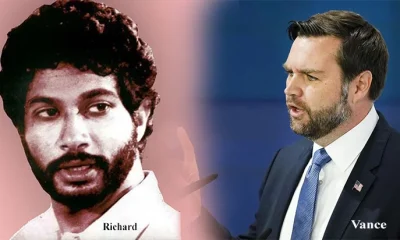
 Features4 days ago
Features4 days agoTwo films and comments
-

 Features7 days ago
Features7 days agoClean Sri Lanka and Noise Pollution (Part II)
-

 Editorial6 days ago
Editorial6 days agoCoal giant awakes, but uncertainty prevails




